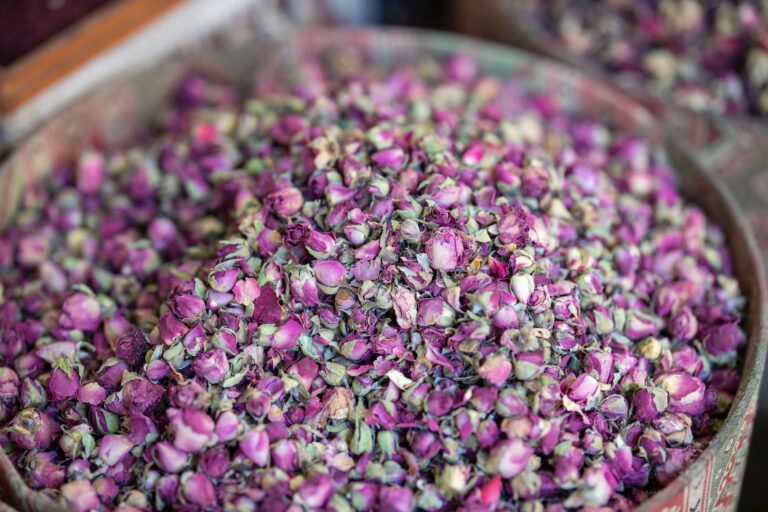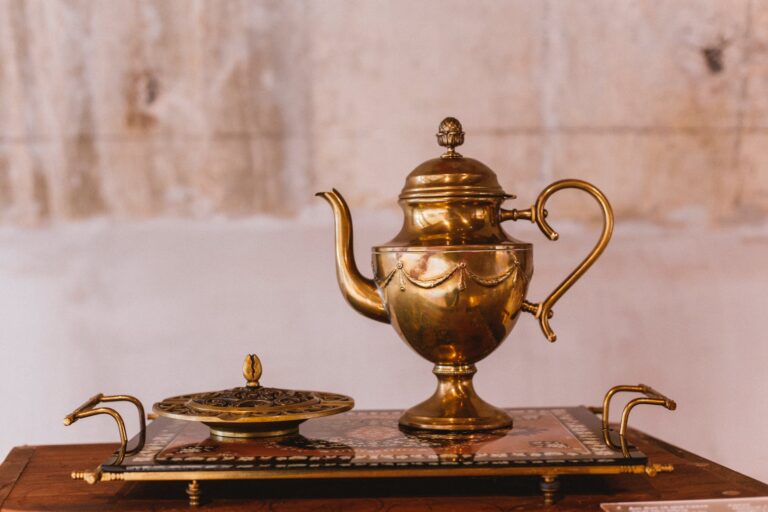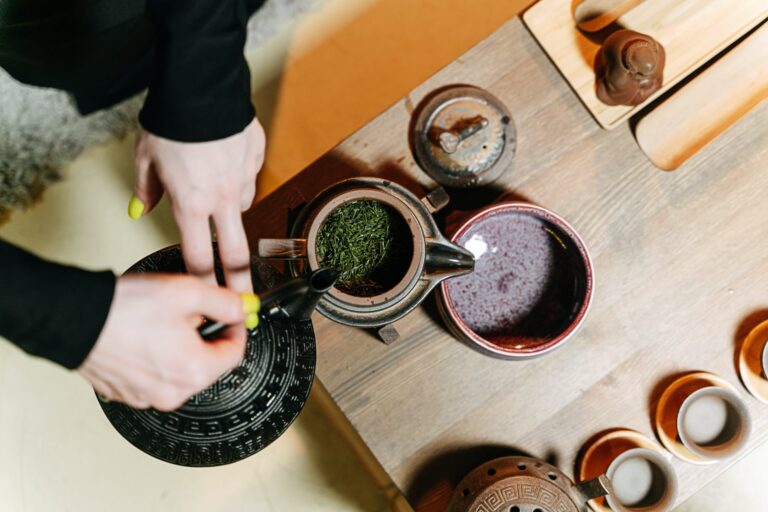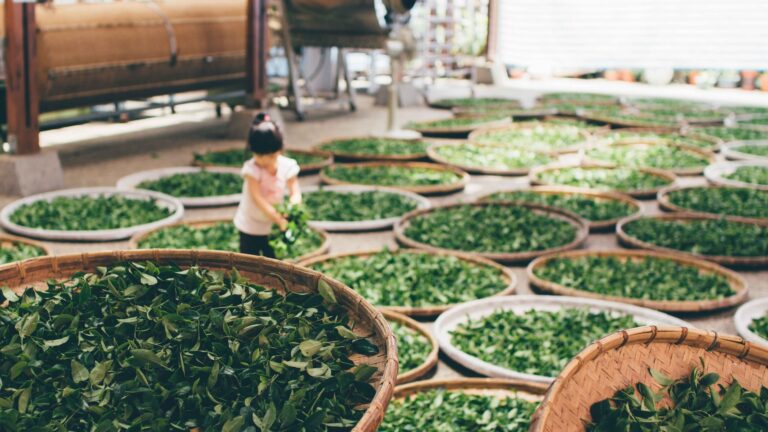From Leaf to Cup: The Journey of Artisanal Tea
Introduction
In an era dominated by the allure of quick production and automation, the art of crafting artisanal tea emerges as a revered bastion of tradition and meticulous care. This journey, tracing the path from leaf to cup, is far from simplistic; it is a complex interplay between nature’s bounty and artisanal mastery. The resulting beverage, artisanal tea, is a far cry from its mass-produced counterparts, with each sip narrating a rich story of the soil, the climate, and the artisan hands that nurtured and crafted it. This article aims to unfold the intricate journey of artisanal tea, illuminating the various stages that contribute to its distinctive character and highly esteemed status.
Cultivating the Leaf: The First Step
The genesis of artisanal tea lies in the verdant fields where cultivation transcends conventional agriculture, becoming a form of art. Here, each tea plant is not merely grown; it’s tended to with an intimate understanding of the land and its rhythms. In renowned tea-producing regions like Darjeeling’s misty slopes or Fujian’s mineral-rich soils, the unique terroir plays a pivotal role in shaping the tea’s distinct flavors. Cultivation involves an astute selection of the appropriate tea varietal, knowledgeably determining the optimum harvest time, and nurturing the plants in sync with nature’s pulse. This initial step is fundamental, laying the foundation for the quality and flavor profile of the tea.
Harvesting: The Artisan’s Touch
The actual commencement of the tea’s journey is marked by the harvesting process. In the realm of artisanal tea, this stage remains steadfastly traditional. Skilled pickers, often with deep generational ties to the craft, meticulously handpick the leaves. The decision of which leaves to pluck, whether it’s the bud and the first two leaves or just the young shoots, significantly impacts the tea’s ultimate flavor profile. This selective harvesting, a skill unattainable by machines, ensures the highest quality of leaves are chosen for the next stages of tea making.
Processing: Crafting the Flavor
Post-harvest, artisanal tea leaves undergo a transformative process, each step an embodiment of traditional artisanship. The process typically commences with withering, where the leaves are spread out to naturally lose moisture, becoming suitably pliable for subsequent stages. This critical phase initiates the development of the tea’s nuanced flavors.
Then follows the rolling stage, where artisans meticulously hand-roll the leaves. This traditional technique not only shapes the tea but also plays a crucial role in releasing essential oils and enzymes, pivotal for flavor development. The art of rolling requires skill and experience, as the pressure and style of rolling can significantly alter the tea’s taste and aroma.
Next, the leaves may undergo a controlled oxidation process, a stage where the art of tea making truly shines. Depending on the tea variety being crafted, the leaves are exposed to air under carefully monitored conditions. This oxidation is a transformative period where the leaves develop their characteristic color and complex flavor profiles. The artisans’ proficiency in modulating the oxidation process is essential, as it defines the distinction between various types of tea, such as green, oolong, or black.
Oxidation: The Heart of Flavor Development
Oxidation is the heartbeat of artisanal tea production, a phase that significantly shapes the tea’s flavor and aroma profile. The length and environment of this process are meticulously controlled, often varying from one batch to another, ensuring each batch’s uniqueness. Whether creating a lightly oxidized oolong or a fully oxidized black tea, the artisan’s expertise during this phase imbues the tea with its distinct character, a hallmark of artisanal quality.
In some traditions, artisans may engage in partial or full oxidation, manipulating the leaves through various techniques such as shaking, bruising, or rolling, which contributes to the complexity of the flavors. The nuances of this stage are reflective of the artisan’s deep understanding of the tea leaves and their response to the oxidation process.
The Final Touch: Firing and Drying
The concluding stages of tea processing involve firing or drying the leaves, effectively halting the oxidation and preserving the developed flavors. This stage is as much an art as it is a science, requiring a delicate balance to ensure that the tea leaves retain their aroma and flavor integrity. Artisanal tea makers often employ traditional methods like gentle pan-firing or careful sun-drying, which imparts an additional dimension to the tea’s taste.
The expertise of the artisan is paramount during this phase, as it requires a keen understanding of how heat interacts with the tea leaves. The temperature and duration of firing or drying are carefully calibrated to prevent over-processing, which can lead to a loss of the tea’s delicate flavors and aromas. The artisan’s skill in this stage ensures that the tea, once brewed, will offer a sensory experience that is both rich and satisfying.
Packaging: Preserving the Essence
After the meticulous process of crafting the tea, attention turns to its packaging. This step is crucial in preserving the quality and essence of artisanal tea until it reaches the consumer. Traditional packaging methods involve materials that allow the tea to breathe, such as paper or cloth bags, often eschewing plastics or synthetic materials that could alter the tea’s natural aroma and flavors. This careful selection of packaging materials not only preserves the tea’s quality but also echoes the artisanal commitment to sustainability and respect for the product.
The Brewing: An Art in Itself
The final and perhaps most personal stage in the journey of artisanal tea is its brewing. Brewing artisanal tea is an art that requires understanding, patience, and respect for the tea. The temperature of the water, the brewing time, and even the quality of the water itself play pivotal roles in the tea’s final taste and aroma.
- Temperature Precision: Each type of artisanal tea demands a specific water temperature for optimal brewing. For example, green teas usually require cooler water to prevent bitterness, while black teas often need hotter water to fully extract their rich flavors.
- Timing is Key: The brewing time affects the strength and flavor profile of the tea. Artisanal teas, with their nuanced flavors, require careful timing to ensure that their delicate notes are properly expressed without becoming overpowering or overly tannic.
- Water Quality: The quality of water used in brewing can significantly impact the taste of the tea. Artisans often recommend using fresh, soft water free from any strong mineral tastes or odors to allow the tea’s flavors to shine through.
The Full Circle
From the moment the tea leaf sprouts in the field to the final act of brewing, each step in the journey of artisanal tea is imbued with tradition, care, and a deep respect for nature. This journey is not just about producing a beverage; it’s about perpetuating a legacy, crafting an experience, and celebrating the human touch in an increasingly mechanized world.
Artisanal Tea in Modern Times
In today’s fast-paced society, artisanal tea offers a connection to a slower, more deliberate way of life. It represents a conscious choice to value quality over quantity, tradition over trend, and craft over convenience. For the modern tea drinker, choosing artisanal tea is not just about savoring a superior cup; it’s about participating in a story that spans centuries and continents.
The Global Impact of Artisanal Tea
As the appreciation for artisanal tea grows worldwide, its impact extends beyond the confines of traditional tea-drinking cultures. This global recognition is not just a testament to the tea’s quality but also raises awareness about sustainable practices, supports small-scale farmers, and helps preserve age-old traditions.
The Artisanal Tea Movement: Preserving Heritage and Sustainability
The artisanal tea movement is more than a trend; it’s a testament to the enduring appeal of craftsmanship and sustainability. It’s about preserving cultural heritage and promoting ecological balance. This movement underscores the importance of preserving traditional methods that are not only more environmentally friendly but also produce teas with unparalleled complexity and depth.
The Future of Artisanal Tea: A Sustainable Legacy
Looking ahead, the future of artisanal tea appears bright. With increasing global interest in sustainable and ethical consumption, artisanal tea is well-positioned to continue its journey of growth and recognition. By supporting artisanal tea, consumers play a role in sustaining a craft that respects the environment and offers a more mindful and enriching experience.
Artisanal Tea: A Symbol of Cultural Diversity
Every cup of artisanal tea is a celebration of diversity, echoing the unique characteristics of its region of origin. It serves as a reminder of the world’s rich tapestry of cultures and the importance of respecting and preserving these unique traditions.
Embracing Artisanal Tea: A Path to Mindful Living
In embracing artisanal tea, one embraces a path to more mindful and sustainable living. It’s an invitation to slow down, savor the moment, and appreciate the artistry and story behind each cup.
Conclusion
The journey of artisanal tea from leaf to cup is a captivating tale of tradition, skill, and harmony with nature. It is a journey that honors the past while embracing the future, offering a cup that is not just a drink but a rich experience steeped in history, culture, and craftsmanship. As we enjoy artisanal teas, we participate in a legacy that connects us to a simpler, more thoughtful way of life, reminding us of the beauty and value of taking time to appreciate the finer things in life.






